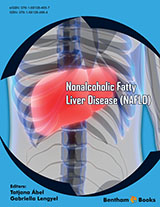Abstract
Hepatocellular carcinoma (HCC) is the most prevalent form of primary liver cancer and the third leading cause of cancer death in the world. HCC has a poor prognosis unless recognized at an early stage, underscoring the importance of prevention. HCC most often develops in cirrhosis associated with chronic viral, toxic, or genetic liver injury. Notably, HCC has a rising incidence in developed societies with an increasing evidence for the role of nonalcoholic fatty liver disease (NAFLD), which has become the most common liver condition mirroring the spread of obesity and type II diabetes. A significant proportion of HCC associated with NAFLD may occur in the absence of advanced fibrosis or cirrhosis, posing a major challenge to cost-efficient risk stratification. Beyond the strong tumorigenic milieu of cirrhosis, molecular mechanisms of hepatocarcinogenesis in NAFLD include adipose tissue expansion with a pro-inflammatory adipokine profile, general and tissue-specific lipotoxicity, and the cell growth promoting effects of elevated insulin levels. Altered gut microbiota and microRNA deregulation may also contribute to HCC development in NAFLD. After reviewing these topics, the chapter provides a brief overview of the clinical characteristics, screening, and novel opportunities in the chemoprevention of NAFLDrelated HCC.
Keywords: Adipose expansion, Cancer prevention, Cancer surveillance, Cirrhosis, Cryptogenic cirrhosis, Diabetes, Dysbiosis, Hepatocarcinogenesis, Hepatocellular carcinoma, Hyperinsulinemia, Insulin resistance, Lipotoxicity, microRNA, Nonalcoholic fatty liver disease, Nonalcoholic steatohepatitis, Noncirrhotic cancer, Obesity, Oncogenesis, Proinflammatory adipokines.

















